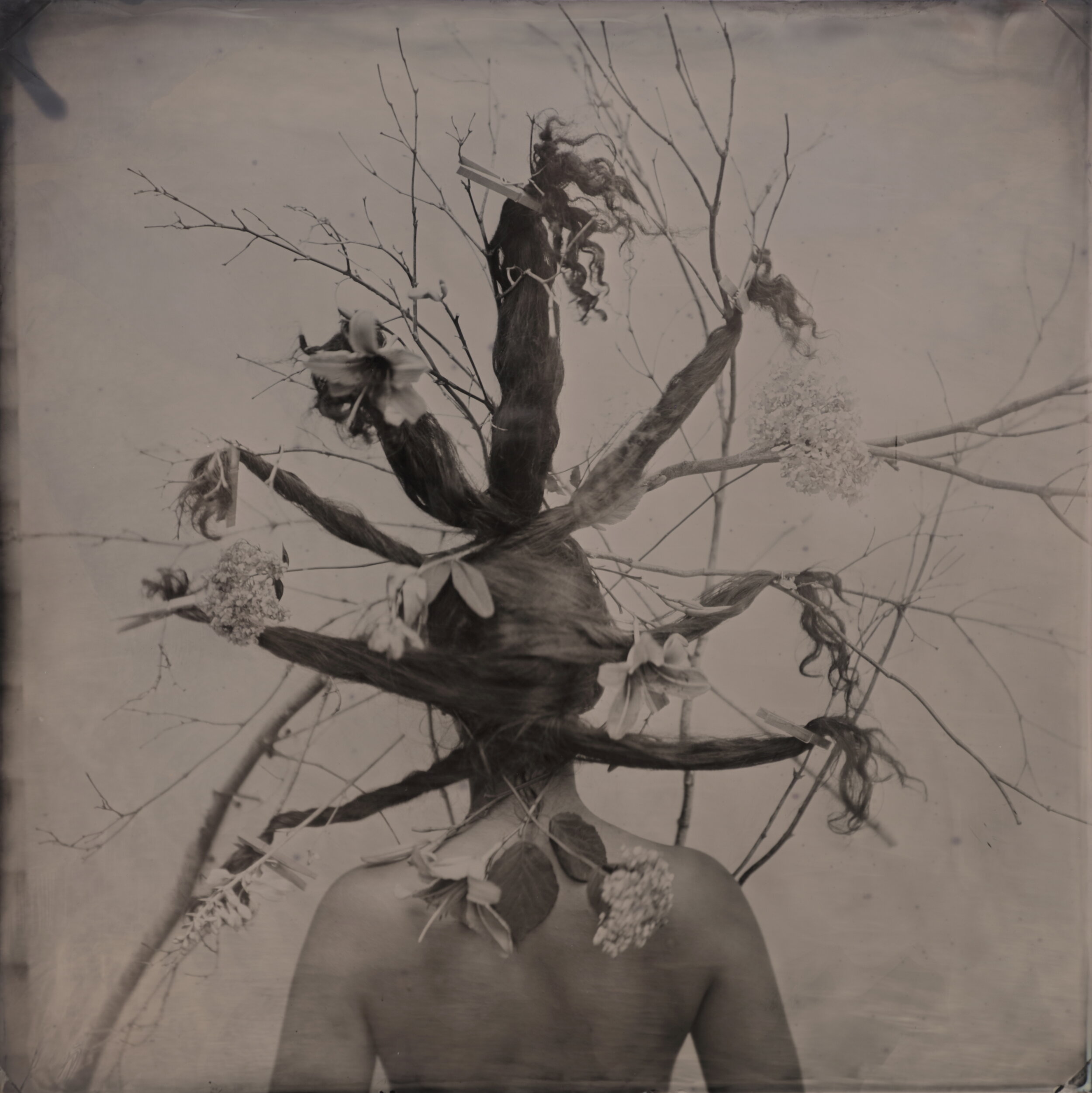Sculpting with Hair
© Rachel Portesi. Graft. 2018
By Micaela Bahn
Hair, like all things visual, carries inescapable symbolic meaning. With its potential for stylization, hair allows for personal representations of self and can simultaneously signify our relations to class, race, gender, religion. Hair mediates how women and femmes move through the world.
Rachel Portesi’s series Hair Portraits is not the usual exploration of hair and femininity that you frequently find in magazines — although the images have been featured in Vogue. They do not have the saturated colors and crisp immediacy of a digital series, or the consistency. Instead, her images contain rich sepia tones, replete with imperfections, and the compositions angle toward myth more than representation. Portesi molds her sitters’ hair into intricate patterns that appear to defy gravity, and adorns them with organic materials. The result is a series of Tintypes that find their stride in entrancing sculptural elements and femme mythology.
© Rachel Portesi. Queen. 2018
Portesi’s crowns of hair come into a life of their own as they are pinned up, nailed to the wall, braided, and accented with flowers. In “Godess,” the model sits enshrouded in large tropical leaves that fan out from behind her like an extravagant head piece worn by women of centuries past. Eyes level with the camera, the model emerges from the leaves in bloom; her naked face is the floral centerpiece.
Tangled tresses are wrapped around half-shrouded objects in the images that follow –– organic designs rooted in the human body become monuments to mythological figures like Artemis, Judith, and Medusa. “Graft” is a study of form and angle. The model’s shoulders are rolled back and the crease between the blades creates a line that draws up to the side of her head. Turned away and tilted an imperceptible degree, she reveals only a glimpse of her cheek. The position leaves her inscrutable beyond her body language and the collection of loose braids that rise into the air and twist around intersected flower stems.
© Rachel Portesi. Daphne. 2018
The braided floral structure in “Graft” is a far reach from the Medusa-like women in the quadriptych, “Homage to Louise Bourgeois.” Here, a series of intricate braids create unnerving patterns in the air around each woman’s head; they could either be the arching array of a diadem or the hairy legs of a spider. The artist Louise Bourgeois, for whom the piece was named, considered similar themes to Portesi — maternity, family relations, eroticism. Portesi’s quadriptych pays homage to Bourgeois’s famous sculpture, “Spider,” and in doing so, establishes a lineage with another female artist.
© Rachel Portesi. Abuela. 2018
Portesi slowed down the photographic process by utilizing wet-plate collodion Tintypes, a 100-year-old technique that requires the sitter to remain still for thirty seconds after the photographer removes the lens cap. The process, as with everything analogue, is finicky and time-consuming. Unlike most other analogue activities though, tintype photography is instant. Even as Hair Portraits explores a type of mythological beauty, it does not ask its audience to delude themselves with the ridiculous ideal of the mothergoddess. The tintypes are riddled with the same defects and blemishes that are inherent to being human.
© Rachel Portesi. Vernal. 2018












